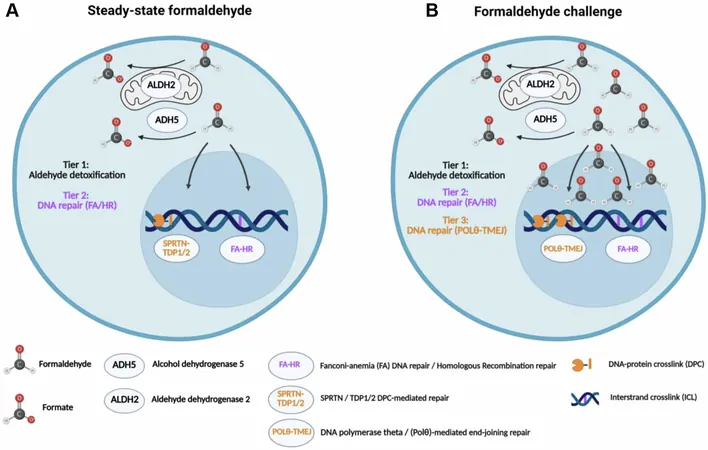
Unlocking a Potential Leukemia Breakthrough: Formaldehyde's Double-Edged Sword
2025-08-28
Author: Wei Ling
In a groundbreaking discovery, scientists at the Lewis Katz School of Medicine at Temple University have unveiled that leukemia cells produce significantly higher levels of formaldehyde compared to their healthy counterparts. This revelation not only sheds light on the survival tactics of cancerous cells but also opens doors to innovative treatment strategies.
All cells generate formaldehyde during metabolism, a substance that poses severe toxicity. To combat this challenge, both healthy and leukemia cells activate a sophisticated defense mechanism. The study, published in the journal Leukemia, identifies a trio of protective proteins essential for this battleground: two known formaldehyde detoxifiers, ADH5 and ALDH2, along with a vital DNA repair enzyme called Pol theta.
The research reveals a staggering fact: when disrupted, especially the combination of Pol theta and either ADH5 or ALDH2, leukemia cells can be devastated, while healthy cells remain unaffected. This finding heralds a potential new avenue for leukemia treatments that selectively target cancer cells.
Dr. Tomasz Skorski, the senior investigator and Director of the Fels Cancer Institute, emphasized the role of hematopoietic stem and progenitor cells (HSPCs) in this context. They already utilize ADH5 and ALDH2 for detoxification, but in high-stress scenarios where formaldehyde levels surge, they recruit Pol theta as an additional shield against DNA damage.
The research, spearheaded by graduate student Jessica Atkins, involved detailed studies using cellular and animal models to understand how these defenses react under stress. Intriguingly, Pol theta primarily comes into play during elevated formaldehyde exposure, acting as a crucial final bastion to mend DNA harm.
Further experiments to inhibit these protective proteins revealed insightful outcomes. Blocking ADH5 and ALDH2 led to an accumulation of formaldehyde, but pairing Pol theta inhibitors with those of ADH5 or ALDH2 significantly increased DNA damage. Crucially, in mouse models of leukemia, these combinations not only showcased effective responses to the toxins but also led to markedly extended survival times.
This research could revolutionize the approach to leukemia treatment by focusing on the vulnerability of cancer cells to formaldehyde toxicity. As investigators continue down this promising path, we may be on the brink of uncovering a sunbeam of hope for those battling this formidable disease.



 Brasil (PT)
Brasil (PT)
 Canada (EN)
Canada (EN)
 Chile (ES)
Chile (ES)
 Česko (CS)
Česko (CS)
 대한민국 (KO)
대한민국 (KO)
 España (ES)
España (ES)
 France (FR)
France (FR)
 Hong Kong (EN)
Hong Kong (EN)
 Italia (IT)
Italia (IT)
 日本 (JA)
日本 (JA)
 Magyarország (HU)
Magyarország (HU)
 Norge (NO)
Norge (NO)
 Polska (PL)
Polska (PL)
 Schweiz (DE)
Schweiz (DE)
 Singapore (EN)
Singapore (EN)
 Sverige (SV)
Sverige (SV)
 Suomi (FI)
Suomi (FI)
 Türkiye (TR)
Türkiye (TR)
 الإمارات العربية المتحدة (AR)
الإمارات العربية المتحدة (AR)